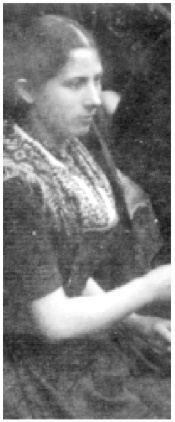Name Helena Patursson | Role Writer | |
 | ||
Born August 27, 1864 Kirkjubour, Faroe Islands Died December 15, 1916, Kirkjubour, Faroe Islands | ||
Súsanna Helena Patursson (27 August 1864 in Kirkjubøur – 15 December 1916 in Kirkjubøur) was a Faroese actress and writer, and the first political feminist in the country, particularly stressing the need for all Faroers to be able to write and learn Faroese properly. She also wrote the first play in the Faroese language. Her brothers Sverre Patursson and Jóannes Patursson were also well-known.
Helena Patursson is the daughter of the king's farmer Poul Peder Pedersen and Ellen Cathrine Djonesen. She grew up on the king's farm Kirkjubøargarður, where she got private lessons together with her brothers. Later she went to Copenhagen, where she learned piano and handiworks. She worked there as paralegal until 1904, when she returned to the Faroes.
Like her brothers Helena Paturson was an activist, ever since the Christmas Meeting of 1888, where the nationalist movement was founded. Her activities were mainly addressed to women. In 1889 wrote she the first play in Faroese, Veðurføst (feminine form of veðurfastur = unable to move from a place because of weather conditions, "weather-stuck"), from which unfortunately only fragments are preserved. It is about women's role in the national awakening and teaching Faroese at home, which had at this time no official status as a language.
She also wrote in the papers Føringatíðindi (Faroe Periodical) and Fuglaframi (Fowl Forth = the Faroese people's furtherance) which belonged to her brothers, Jóannes and Sverre. In Copenhagen she organised a women's union, and in 1896 persuaded the Faroese Association there to affiliate with women.
Back in the Faroes, Helena Patursson founded and wrote her own periodical Oyggjarnar (the Islands), which was not only the first periodical mainly intended for Faroese women, but also at its time (1905-1908) was the only periodical in Faroese language. Thus Oyggjarnar has a large importance in the history of the Faroe Islands. Every issue was four pages long, it came out weekly, and it originally sold for 1,5 crowns for a half-year subscription but later the cost lessened.
It was not addressed to women only, but most articles were about Faroese education and a need for the shift from being taught entirely in Danish to teaching children in Faroese (as at the time, Danish was the official language and was the language used in schools), how the Faroe Islands was seen as or mentioned by other countries, the Faroese women's role or jobs, recipes (which were considered a national request at the time) and tips for how to create a good home. For instance Oyggjarnar emphasized that girls should have the same good food as boys, and articles might be written about news from Iceland or Norway as told or sent in by a Faroer who visited there. A new women's role became popular, using parts of the old farmer's culture but changing into something more decorative, for example traditional wool processing becoming only something for handicrafts.
A book, which was partially a compilation of her articles from Oyggjarnar, came out February 1908 and was called Matreglur fyri hvørt hús (literally, "Food-rules for every house"), which was the first Faroese cookbook. It consisted of 160 "rules" (meaning recipes - at the time, there seemed to be no clear word for food "recipes" as the periodical itself switched between names for them often), was sold for 50 oyra (half a crown, equivalent to cents of a dollar), and was for sale at the bookshop in Tórshavn, at B.A. Sálmalsson in Tórshavn, at various places in towns and with Helena Patursson herself in Kirkjubøur.
Of the recipes published in the periodical at the time of the cookbook's publishing, most were for meals considered to be basic, traditional food today: oatmeal porridge, lamb, meatballs, liver paste, puffin, fishballs, plukkfisk (a common dish in Iceland and the Faroes, essentially leftover fish with potatoes and other things mixed in), kleynir (common in Iceland and the Faroes, a sort of plain, doughnut-like pastry eaten with coffee), cauliflower soup, and how to make a good sausage. There were, however, a few recipes for more uncommon things, such as adaptations from so-called American recipes or instructions for how to cook pork, which by the article's own admission was something that almost no Faroers had tasted at the time. This was likely due to the fact that the periodical was also being read by fishermen who spent most of their time abroad, travelling to America, Denmark, and other countries which did have alternative foods. Some articles in the periodical were directly addressed to such fishermen.
Excerpt from Oyggjarnar (May 18, 1905):
Fríðka um búgvið (Beautification around dwellings/the home) was the second book in 1912. But by 1908 the paper Oyggjarnar had been discontinued because she received less support by her famous brothers.
Súsanna Helena Patursson's biographer, the Faroese professor for literature Malan Marnersdóttir, supposes that it was a sign of the times that a single woman's voice was missed in that time, when men dominated the political scene of the national movement. However, Helena Patursson was a pioneer, and her work and ideas were continued in 1952, when Kvinnufelagið (The Women's Union/Group) was founded.
